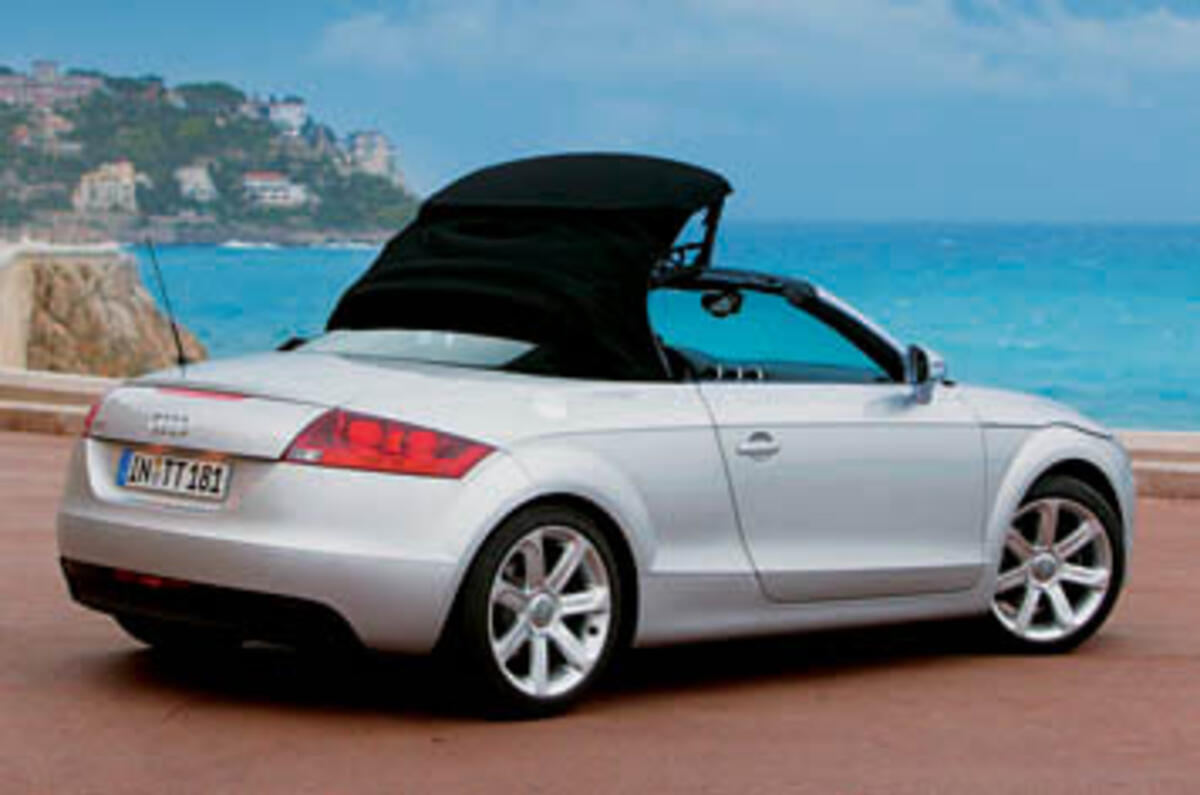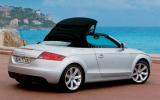What’s new?
The chassis, for one. The old roadster was never an inspiring drive. Its Mk4 Golf platform was too flexible for that. So Audi has turned conventional thinking on its head for the new version, combining different materials and construction methods on one platform: the inner wings, suspension towers, front chassis rails and part of the front bulkhead are made of light and rigid cast aluminium; huge, multi-walled aluminium extrusions are used for the sills, floorpan reinforcements and for a bracing bar between the front suspension towers; and stamped aluminium sheet is used for the inner wing mounts, windscreen surround, floorpan and rear wings.
The really clever bit is that steel has been incorporated too: the rear floorpan and inner wings are made of conventional pressed steel, and there’s a massive steel bulkhead behind the seats. The upshot is a 120 percent improvement in torsional rigidity and an appealingly low weight – while the use of heavier steel allows for a more even distribution.
Skin-wise, the new roadster lacks the visual discipline of the outgoing model; Audi has gone down the road of styling rather than pure design. That said, it will get a pavement-side reception usually reserved for Porsches: it looks very expensive and is clearly beautifully made.
Inside, Audi has dispensed with its long-established design language and switched from the old extruded, slab-face dashboard to one that is much more driver orientated. (It seems that Audi and BMW have swapped philosophies, as this kind of ‘cockpit’-style dash once defined BMW.) A design enthusiast could spend a long time in here activating and deactivating to his heart’s content.
What’s it like?
As soon as we pulled away from Nice airport, it was clear that this car has a wonderful all-of-a-piece feel. The 197bhp engine, while not having the most appealing exhaust note, is decently smooth and has the lungs to carry two people at a brisk motorway speed, and deliver a decent pace on steep mountain passes. Its six-speed manual has a good, clean action, with only the tiniest hint of an obstruction as the cogs engage.
Our car was equipped with the magnetic-ride damping option. Developed for UK conditions, it uses a fluid containing microscopic magnetic particles. When a voltage is applied to it, the viscosity is altered and damping firmed in milliseconds. With the ‘sport’ setting switched off, the TT was satisfyingly compliant. Even with it switched on, the extra firmness is well judged.
Not so the DSG-equipped 3.2 V6 247bhp quattro version. In both settings, its ride was harsher and less settled. Nor was this car appreciably faster than its front-drive cousin – especially in the mountains, where the lighter (the quattro drivetrain adds 175kg to the 3.2’s all-up weight), more effortless 2.0 came into its own. Its steering, even when on full lock for hairpins, retained a sense of delicacy and the loading at the rim never wavered. This made it easy to place, another advantage of a smaller engine in a transverse-engine car. A day at the wheel of this new lidless TT wouldn’t be a challenge, and it has far greater potential as a long-distance runner than the old car. Rain or shine.
Just an hour after leaving the airport we were treated to a full-scale downpour. And the TT never felt anything less than unruffled. Inside or out. Travelling through this weather in a roadster might at one time meant having to be hardy, committed even. Not any more.

























Add your comment